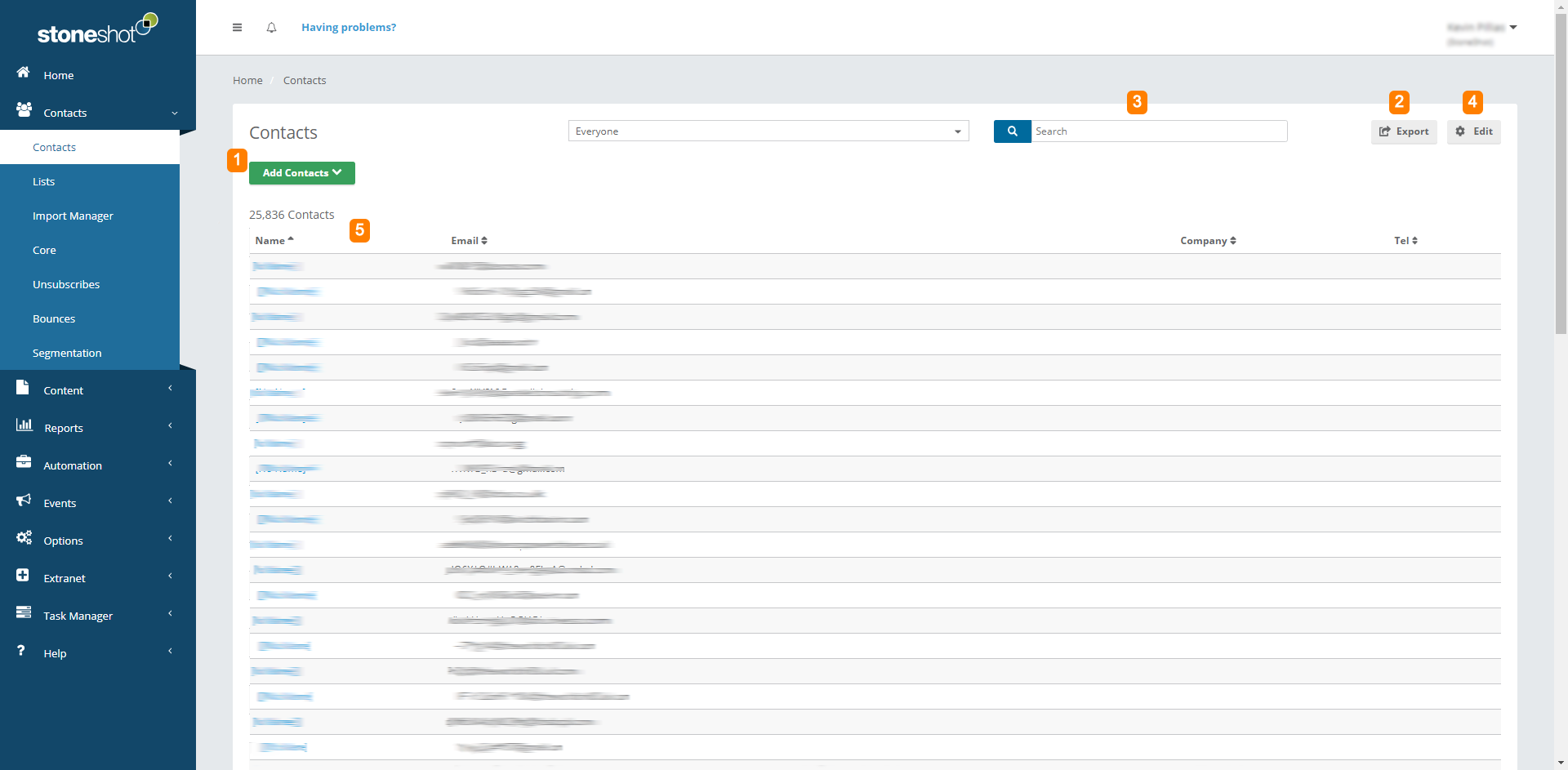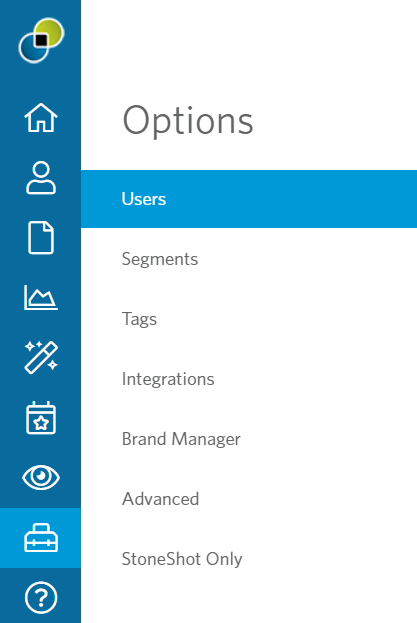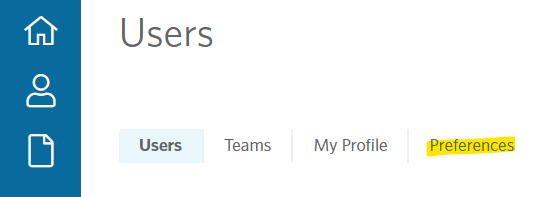StoneShot Learning > Contacts Lists > Managing Contacts
Managing Contacts
Learn how to add contacts, import a list of contacts, export contacts and search for contacts in our Contacts section of the StoneShot Marketing Platform.
To start off, let’s take a quick look at what’s on the contacts page. Here you’ll be able to:
- Create new contacts or import contacts
- Export existing contacts
- Search Fields
- Edit to add and remove columns to your current view, ready for Export
- Adapt the way you view your contacts
Sorting and Search
You can sort data by clicking the head of each column. By default, contacts are ordered by the order in which they were loaded.
Managing individual contacts
On the contact screen, once you’re viewing a contact’s record, you’ll be taken to the ‘Detail’ tab.
- Opt-in and Bounce – The opt-in flag shows whether this contact will receive an email or not. If you opt someone out, their record will automatically be excluded from all campaigns. Email recipients can also opt themselves out by following an unsubscribe link within the email. The bounce flag shows whether this contact is on the suppression list. This means that the client is still opted in but won’t receive any emails until his or her email address is fixed.
- Actions – The Actions tab contains:
– Email Contact – this allows you to send a one-off email to a contact without launching an entire campaign.
– New Contact
– Copy Contact - Contact details – The name and address fields are standard. Up to 12 custom fields can be added, in which you can store information such as salutation, dietary requirements or travel arrangements. We normally use the salutation field to personalise our emails, which is why you’ll often see “Dear {CUSTOM1}” in the emails we create.
- Segmentation – Assign contacts to preferences or segments that you have previously set up.
- Activity – At the bottom of the contact screen, you’ll see a list of every interaction that your contact has had. You’ll see everything such as when contact information was updated, any emails that have been sent, opened or clicked, and also any form submissions. You can click on each icon to see what action was taken.
Merging contacts
You don’t technically need to worry about duplicate contacts as StoneShot will dedupe for you when you send an email – even if you select multiple lists with the same contacts in each one.
That said, keeping your lists clean makes it easier to attribute activity to a single contact. You can dedupe in StoneShot by merging contacts together, choosing the “best” fields to keep on each contact. Here’s how to do it.
- Open the app and, on the left-side menu, select ‘Options’ and then ‘Advanced’.
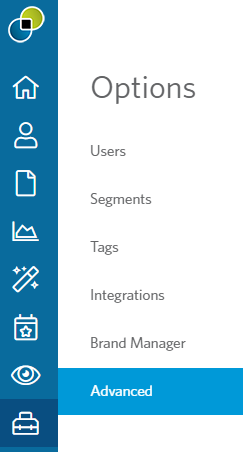
- In ‘Advanced’ you’ll see the ‘General’ options by default. To access the contacts’ merge feature, you can click on the ‘Contact Management’ tab in the sub-navigation.

- In this page, you can search for duplicate email addresses:
- in a specific list, where you can use the dropdown to choose which list to use.

- or by email address. Just type in or paste the email address to search for.

- The search results will display all the duplicate contact records existing in your account. You can tick the checkbox next to the two contact records you’d like to merge and click the green button ‘Next >’.

- Select the primary contact you’d like to keep by clicking the “Set Primary” button. If you’d like to keep the oldest contact record, you can see its contact ID and check which number is the smallest. That’s the oldest contact record.

- After selecting which contact to set as the primary one, you’ll then be able to select which fields from each contact you’d like to keep in the unique contact. Select the fields from the left or right column depending on which data you’d like to keep
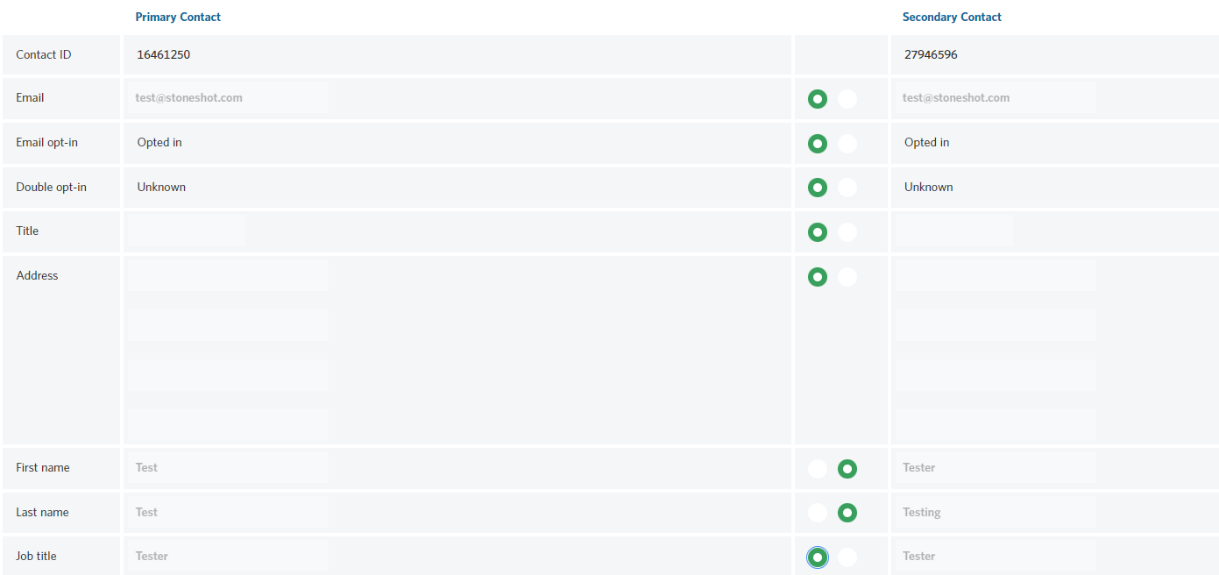
- Finally, click the Merge button on the bottom right of the page to merge the two contact records.
Note: you cannot merge two contact records who both have CRM IDs as each contact record is linked back to your CRM.
Changing the number of contact records I see on a page
In the Contacts section, you can edit the number of records you’d like to appear on the page.
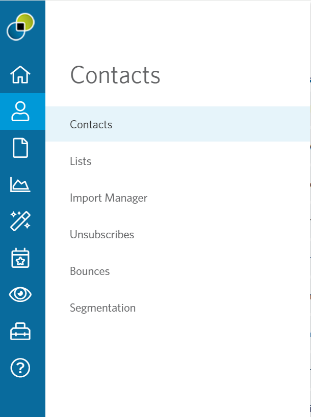
To do this, follow the steps below:
- Navigate to Options > Users
- Click into Preferences
- On this page you’ll be able to edit the number of records displayed via the ‘Page size’ dropdown. Hit Save once you’ve made your selection.
Note: This method is not accessible by StoneShot for Sales users.
See how many emails a contact gets in a month
The Contacts section within the StoneShot platform provides a series of tools to help manage your contact records and their information. To view the number of emails a contact receives in a month; you will need to create a list – this can be either static or dynamic depending on what best suits the task at hand.
- Navigate to Contacts > Lists
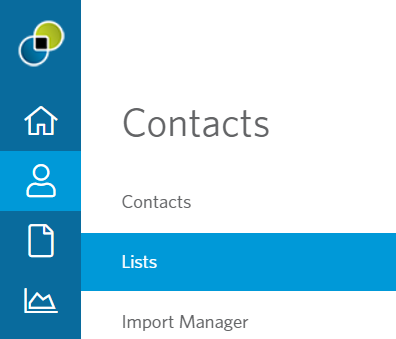
- Create a new list using the New List dropdown (For this example, we’re using a static list).

- Once you’ve set up the list with your contact(s), open the Search and Filter tab by clicking the blue arrow located on the top right of the page. This edit panel allows you to build up information on your list.

- Type in “sent” in the search bar to add the Sent column to your list. This is also where you can edit the time span via the Report Range dropdown.
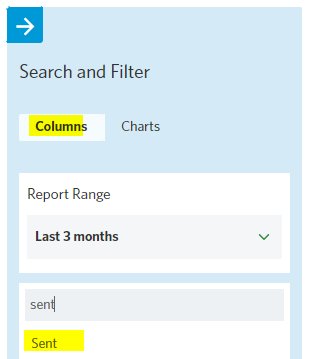
- You should now see the new column added to the display like below. The number of sent emails will now be visible for each contact.






